The CFAR Leadership Meeting meets on the 4th Monday of every month from 11:00 AM - 12:00 PM EST. Contact Name: Eileen Martin Email: emarti77@jhmi.edu
Calendar of Events
|
Sunday
|
Monday
|
Tuesday
|
Wednesday
|
Thursday
|
Friday
|
Saturday
|
|---|---|---|---|---|---|---|
|
0 events,
|
1 event,
|
0 events,
|
0 events,
|
1 event,
-
The Johns Hopkins University’s Community Participatory Advisory Board Presents: Bridging the Gap Symposium Breaking Silos & Connecting the Dots: Coming Together to address Housing, Mental Health, Substance Use & Aging […] |
1 event,
The Center for AIDS Research and the AIDS Education and Training Center are collaborating to provide clinicians and investigators with information on current research, topics of interest as well as clinical updates. […] |
0 events,
|
|
0 events,
|
1 event,
-
Please join the JHU CFAR Biostatistics and Epidemiology Methodology (BEM) Core on Monday, November 3rd at 2 pm ET for a hybrid session on inverse probability weighting and g-computation. This […] |
0 events,
|
0 events,
|
1 event,
Contact Name: Stephanie DeLong Email: sdelong2@jhmi.edu The CFAR Adolescent and Young Adult International Scientific Working Group meeting on the 1st Thursday of each month, 10:30am-11:30am . Please contact Stephanie DeLong […] |
1 event,
The Center for AIDS Research and the AIDS Education and Training Center are collaborating to provide clinicians and investigators with information on current research, topics of interest as well as clinical updates. […] |
0 events,
|
|
0 events,
|
1 event,
Contact Name: Eileen Martin Email: emarti77@jhmi.edu Mission Statement The mission of the JHU CFAR’s Adolescent and Young Adult SWG is to promote interdisciplinary research collaborations across the intersecting domains of […] |
1 event,
The November Implementation Science Monthly Rounds (ISMR) will feature Drs. Sarah Rutstein and Kate Muessig. Dr. Rutstein is an Assistant Professor of Medicine at the University of North Carolina’s Division […] |
0 events,
|
0 events,
|
1 event,
The Center for AIDS Research and the AIDS Education and Training Center are collaborating to provide clinicians and investigators with information on current research, topics of interest as well as clinical updates. […] |
0 events,
|
|
0 events,
|
0 events,
|
0 events,
|
0 events,
|
0 events,
|
1 event,
The Center for AIDS Research and the AIDS Education and Training Center are collaborating to provide clinicians and investigators with information on current research, topics of interest as well as clinical updates. […] |
0 events,
|
|
0 events,
|
1 event,
The CFAR Leadership Meeting meets on the 4th Monday of every month from 11:00 AM - 12:00 PM EST. Contact Name: Eileen Martin Email: emarti77@jhmi.edu |
0 events,
|
0 events,
|
1 event,
Conversation, Advice, and Topics about Cognition with HIV Join the Baltimore-Washington CATCH Support Group, to share support, listen to stories of courage, and learn more about brain changes associated with life with HIV! Meeting […] |
2 events,
The Center for AIDS Research and the AIDS Education and Training Center are collaborating to provide clinicians and investigators with information on current research, topics of interest as well as clinical updates. […] The CFAR Central Nervous System Dysfuction Scientific Working Group meets on the 4th Friday of every month from 2:00 - 3:00 PM EST Contact Name: Eileen Martin Email: emarti77@jhmi.edu |
0 events,
|
|
0 events,
|
0 events,
|
0 events,
|
0 events,
|
1 event,
Contact Name: Stephanie DeLong Email: sdelong2@jhmi.edu The CFAR Adolescent and Young Adult International Scientific Working Group meeting on the 1st Thursday of each month, 10:30am-11:30am . Please contact Stephanie DeLong […] |
1 event,
The Center for AIDS Research and the AIDS Education and Training Center are collaborating to provide clinicians and investigators with information on current research, topics of interest as well as clinical updates. […] |
0 events,
|

